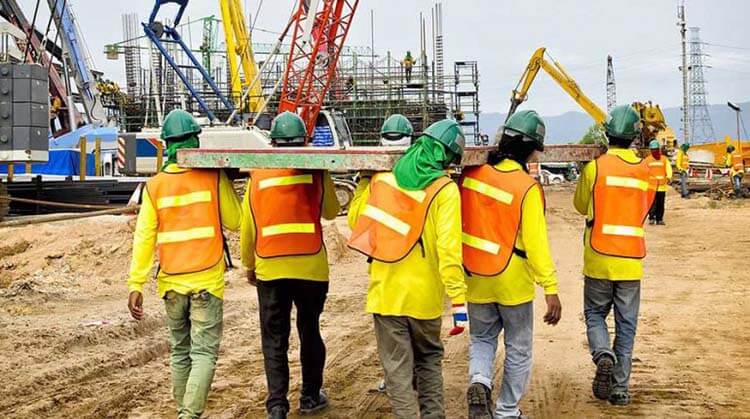
5 Essential Tips for Achieving Construction Excellence
Introduction: In the fast-paced world of construction, achieving excellence is crucial for success. Whether you’re a contractor, architect, engineer, or project manager, striving for excellence can lead to better outcomes, satisfied clients, and a strong reputation in the industry. Here are five essential tips to help you achieve construction excellence in your projects.
Prioritize Safety: Safety should always be the top priority on any construction site. Implement comprehensive safety protocols, provide ongoing training for all workers, and regularly inspect the site for potential hazards. By creating a culture of safety and prioritizing the well-being of your team, you can prevent accidents, minimize downtime, and build a reputation as a responsible and reliable contractor.
Embrace Technology: In today’s digital age, technology plays a critical role in construction excellence. Embrace innovative tools and software solutions that streamline processes, improve efficiency, and enhance collaboration. From Building Information Modeling (BIM) to project management software and drones, leveraging technology can help you optimize workflows, reduce costs, and deliver superior results to your clients.
Focus on Quality: Quality should never be compromised in construction. Use high-quality materials, adhere to industry standards and regulations, and employ skilled craftsmen who take pride in their work. Prioritize quality control throughout the project lifecycle, conducting regular inspections and addressing any issues promptly. By delivering projects that meet or exceed quality expectations, you’ll earn the trust and loyalty of your clients.
Communicate Effectively: Clear and open communication is essential for successful construction projects. Maintain regular communication channels with your team, subcontractors, suppliers, and clients to ensure everyone is aligned on project goals, timelines, and expectations. Address any concerns or challenges proactively and keep stakeholders informed of progress and developments. Effective communication fosters trust, minimizes misunderstandings, and enhances collaboration.
Commit to Continuous Improvement: Construction is an ever-evolving industry, and continuous improvement is key to staying ahead of the curve. Encourage a culture of learning and innovation within your organization, invest in training and development opportunities for your team, and actively seek feedback from clients and stakeholders. By constantly seeking ways to improve processes, techniques, and outcomes, you’ll position yourself as a leader in construction excellence.
Conclusion: Achieving construction excellence requires a commitment to safety, quality, innovation, communication, and continuous improvement. By following these essential tips and embracing a culture of excellence, you can deliver superior results, exceed client expectations, and build a reputation as a trusted and respected leader in the construction industry.
Blog Post 2: “The Role of Collaboration in Construction Excellence”
Introduction: Construction projects are complex undertakings that require collaboration and cooperation among various stakeholders to achieve success. From architects and engineers to contractors, subcontractors, suppliers, and clients, effective collaboration is essential for delivering projects on time, within budget, and to the highest standards of quality. In this blog post, we’ll explore the role of collaboration in achieving construction excellence and how it benefits all parties involved.
Enhancing Communication: One of the primary benefits of collaboration in construction is improved communication. When all stakeholders are actively engaged and communicating effectively, it reduces misunderstandings, prevents delays, and ensures everyone is aligned on project goals and expectations. Open lines of communication foster trust, transparency, and accountability, creating a positive working environment conducive to success.
Leveraging Diverse Expertise: Construction projects involve a wide range of disciplines and specialties, each contributing unique expertise and perspectives. Collaboration allows stakeholders to leverage this diverse knowledge base, tapping into the skills and experience of architects, engineers, contractors, and other professionals to overcome challenges, solve problems, and innovate solutions. By working together, teams can achieve greater efficiency, creativity, and effectiveness in project delivery.
Promoting Innovation: Collaboration fosters an environment of creativity and innovation where new ideas can flourish. When stakeholders collaborate closely, they can brainstorm innovative solutions, explore alternative approaches, and push the boundaries of what’s possible in construction. Whether it’s adopting new technologies, implementing sustainable practices, or optimizing workflows, collaborative efforts drive continuous improvement and lead to better outcomes for all.
Mitigating Risks: Construction projects are inherently complex and involve various risks, from budget overruns and schedule delays to design errors and regulatory compliance issues. Collaboration helps mitigate these risks by facilitating proactive risk identification, assessment, and mitigation strategies. By working together to anticipate potential challenges and develop contingency plans, stakeholders can minimize disruptions, resolve issues promptly, and keep projects on track.
Enhancing Client Satisfaction: Ultimately, the goal of construction collaboration is to deliver projects that meet or exceed client expectations. By involving clients in the collaborative process, soliciting their input and feedback, and keeping them informed of progress and decisions, stakeholders can ensure that the final outcome aligns with the client’s vision and objectives. Collaborative efforts lead to greater client satisfaction, repeat business, and positive referrals, enhancing the reputation and success of all involved.
Conclusion: Collaboration is essential for achieving construction excellence, driving innovation, mitigating risks, and enhancing client satisfaction. By fostering a culture of collaboration and cooperation among stakeholders, construction projects can achieve superior results, exceed expectations, and deliver lasting value to clients and communities. Embrace collaboration as a cornerstone of success in construction and reap the rewards of excellence.



